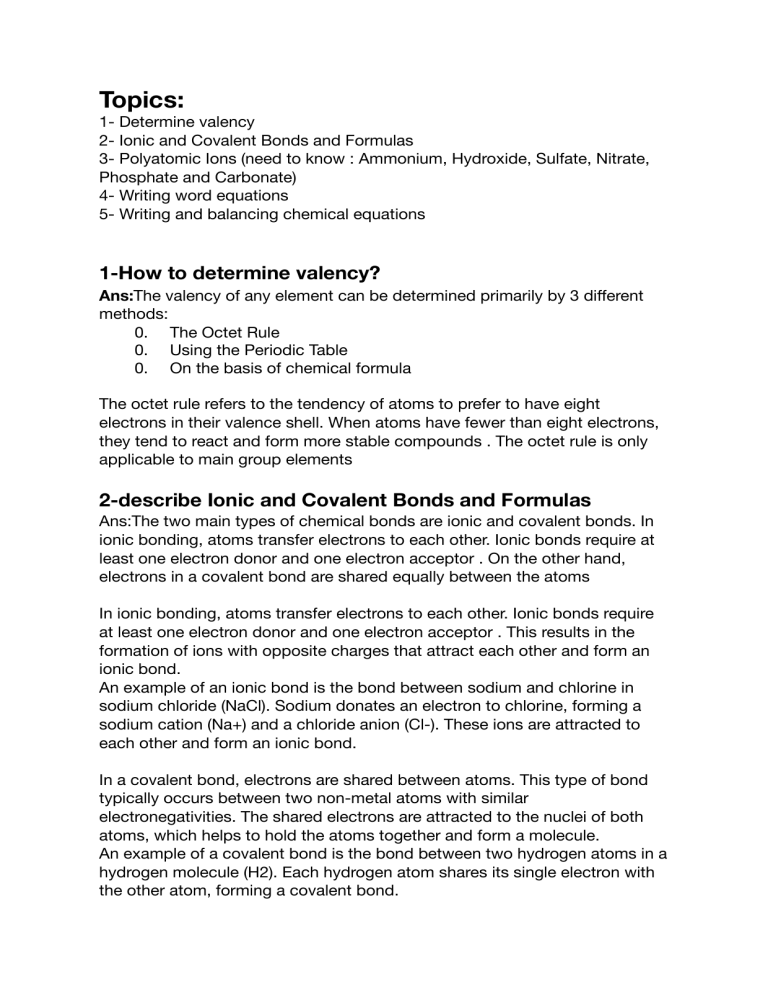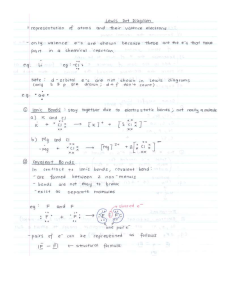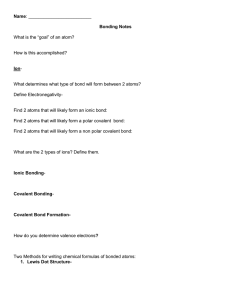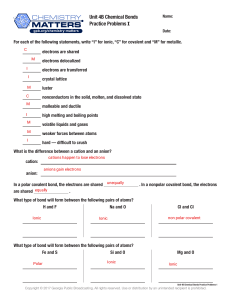
Topics: 1- Determine valency 2- Ionic and Covalent Bonds and Formulas 3- Polyatomic Ions (need to know : Ammonium, Hydroxide, Sulfate, Nitrate, Phosphate and Carbonate) 4- Writing word equations 5- Writing and balancing chemical equations 1-How to determine valency? Ans:The valency of any element can be determined primarily by 3 different methods: 0. The Octet Rule 0. Using the Periodic Table 0. On the basis of chemical formula The octet rule refers to the tendency of atoms to prefer to have eight electrons in their valence shell. When atoms have fewer than eight electrons, they tend to react and form more stable compounds . The octet rule is only applicable to main group elements 2-describe Ionic and Covalent Bonds and Formulas Ans:The two main types of chemical bonds are ionic and covalent bonds. In ionic bonding, atoms transfer electrons to each other. Ionic bonds require at least one electron donor and one electron acceptor . On the other hand, electrons in a covalent bond are shared equally between the atoms In ionic bonding, atoms transfer electrons to each other. Ionic bonds require at least one electron donor and one electron acceptor . This results in the formation of ions with opposite charges that attract each other and form an ionic bond. An example of an ionic bond is the bond between sodium and chlorine in sodium chloride (NaCl). Sodium donates an electron to chlorine, forming a sodium cation (Na+) and a chloride anion (Cl-). These ions are attracted to each other and form an ionic bond. In a covalent bond, electrons are shared between atoms. This type of bond typically occurs between two non-metal atoms with similar electronegativities. The shared electrons are attracted to the nuclei of both atoms, which helps to hold the atoms together and form a molecule. An example of a covalent bond is the bond between two hydrogen atoms in a hydrogen molecule (H2). Each hydrogen atom shares its single electron with the other atom, forming a covalent bond. 3- What are Polyatomic Ions? Ans:A polyatomic ion is a covalently bonded set of two or more atoms that carries a net charge. This means that the total number of electrons in the molecule is not equal to the total number of protons in the molecule 4-How to write word equations? Ans:A word equation is a way to represent a chemical reaction using the names of the reactants and products involved. To write a word equation, you need to know the names of all the substances involved in the reaction. For example, consider a reaction between calcium carbonate and hydrochloric acid. The products of this reaction are calcium chloride, water, and carbon dioxide. The word equation for this reaction would be: Calcium carbonate + hydrochloric acid → calcium chloride + water + carbon dioxide 5-How to writing and balancing chemical equations? Ans:To write a chemical equation, you need to know the formulas of all the reactants and products involved in the reaction. Once you have written the unbalanced equation using these formulas, you can balance it by adjusting the coefficients (the numbers in front of each formula) so that equal numbers of atoms for each element are represented on both sides of the equation 1. Here are some steps that can help you balance a chemical equation: 1. Identify the most complex substance. 2. Beginning with that substance, choose an element that appears in only one reactant and one product if possible. 3. Adjust the coefficients to obtain an equal number of atoms of this element on both sides. 4. Balance polyatomic ions (if present) as a unit.






